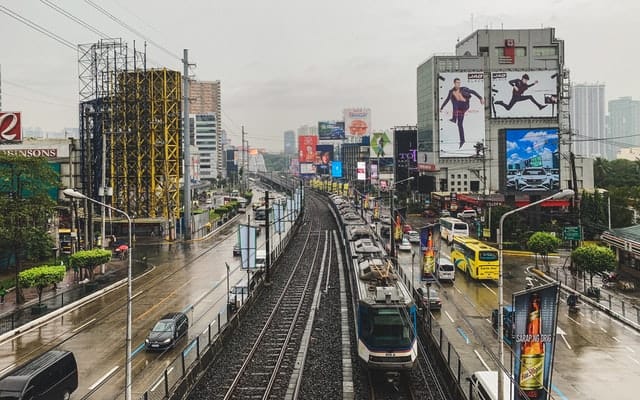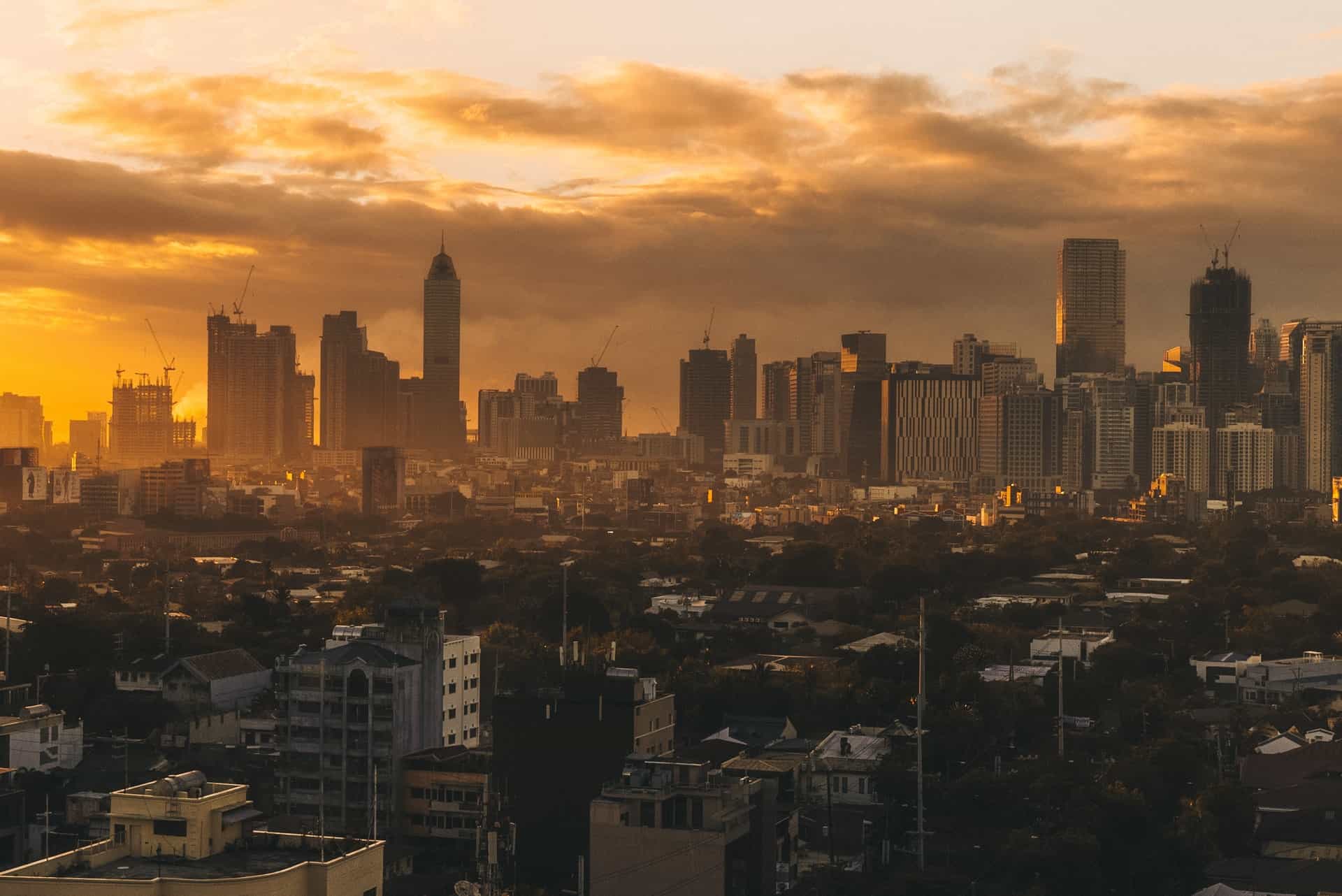First-Time Manila Travel Guide: Essentials To Know Before You Visit

Everyone who visits Manila comes back with a strong opinion of the city.
Sometimes it's positive, sometimes it's negative, but one thing is for sure: staying in Manila leaves a strong impression.
That raises some interesting questions for travelers.
What's different between those who do and don't like the city? What sort of expectations lead to a bad impression versus a good one? Most importantly, what should you know before arriving to have a great stay?
I had the advantage of first visiting Manila with a local. You may not.
So, after visiting several times (each for a few weeks or more), I want to share what would've been helpful for a first visit without local company.
Table of Contents
- How Do You Describe Manila?
- Is Manila Worth Visiting?
- What Language Do They Speak In Manila?
- Is Manila Safe To Visit?
- What's A Good Travel Budget For Manila?
- What's The Best Time Of Year To Visit Manila?
- What Part Of Manila Should I Stay In?
- How Many Days Should I Spend In Manila?
- Conclusion: Planning Your Manila Trip
How Do You Describe Manila?
Whether they love Manila or hate it, I think every single traveler would describe it as a chaotic city. You can read here about all that Manila is best known for.
But, in any case, you should realize right off the bat that it's nothing like the languid tropical paradise that the word "Philippines" might bring to mind.
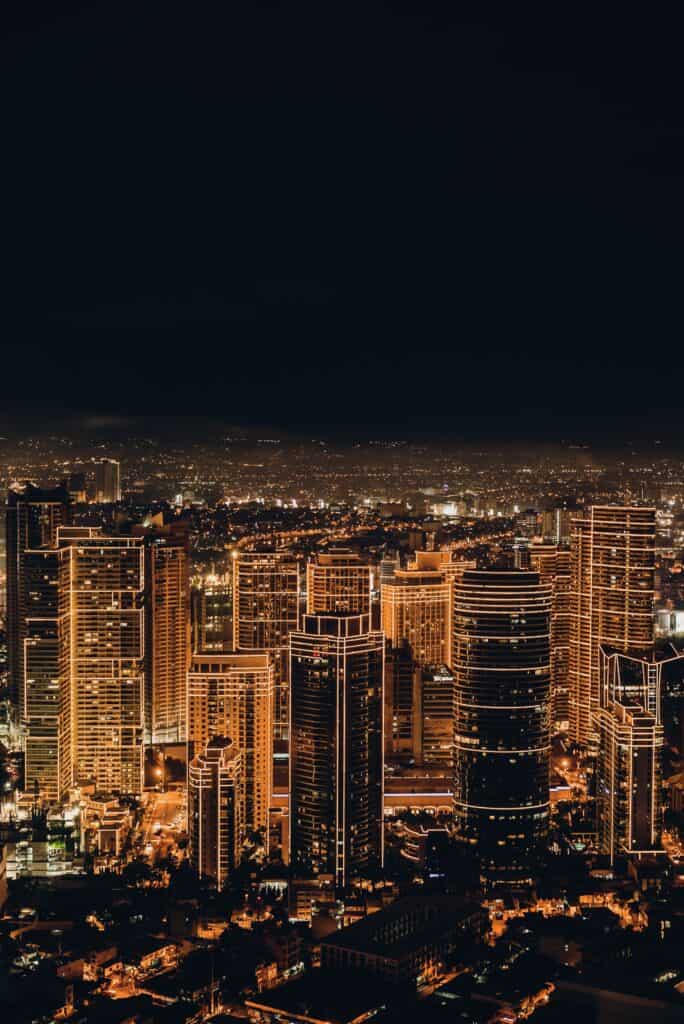
Otherwise, it is the national capital on almost every level--not just politically--so you'll find abundant sites and attractions if you know where to look. That's an important qualifier, since the good stuff doesn't always jump out and may not be all that convenient, but it is most definitely there.
It helps to understand that the City of Manila itself is not that big of an area, and "Manila" usually refers to the entire metro area (Metro Manila, a.k.a. the National Capital Region)...and sometimes even beyond.
Long story short, it's the polar opposite of many European cities where most points of interest and nice neighborhoods are generally near a well-defined center. For a better sense of what I mean, take a moment to read about the different cities of Metro Manila.
Is Manila Worth Visiting?
Some Asian capitals are standalone destinations, and some are...well...not. Manila occupies a sort of middle ground, in my mind. It's nothing like Tokyo, or even Bangkok, but it's not remotely a war zone or backwater, either.
If you find hectic cities more exciting than draining, then Manila is well worth a few days of your trip. Most flights from outside Asia enter the Philippines through Manila anyhow, so it's a convenient and affordable bookend to your island hopping, nature excursions, and so forth.
What Language Do They Speak In Manila?
Manila's local language is Tagalog, but English is almost universally spoken at quite fluent levels. Read this article for more background on why and how both languages are used locally.
For travelers, there is essentially no practical need for Tagalog. Every venue and service with even the slightest appeal to visitors will have English menus/guides and English-speaking staff. I imagine there are exceptions, but I've yet to find one!
I believe it's worth learning Tagalog if you'll stay around Metro Manila/southern Luzon for an extended period. But there are several reasons Tagalog is tricky for native English speakers to pick up. Language learning is a terrific hobby, but it won't yield much practical value over the time period that most tourists would stay in the area.
Is Manila Safe To Visit?
Let's be frank: if you haven't already seen lots of warnings about sketchy things and tourist dangers throughout the Philippines, you will. And they seem to happen at a higher rate than in Japan or France or Canada or what have you.
But understand two things.
First, realize that many of the most sordid events have involved expats involved (or whom we can reasonably guess were involved) in local businesses--often, but not always, of a controversial nature. That's still a concern in the big picture, but pragmatically, it's a world apart from anything you'll do during your stay.
Secondly, and more specifically to Manila, there are bad areas and there are good areas. Tourists almost exclusively stay in the latter (which are easy to identify), if only because the former just don't have much of interest. That's not to say that all poorer areas are inherently dangerous or all wealthy ones are inherently safe, just that your priorities on a short-term stay will probably keep you around the well-lighted and more heavily policed districts.
Personally, I worry more about traffic safety than any of the above. I've tried to give the topic of Manila travel safety a fair treatment here, but in short: anyone who is reasonably cautious, self-aware, and happy to keep a low profile has no reason to expect problems.
What's A Good Travel Budget For Manila?
When you visit a city that is a little chaotic and rough around the edges, one of the biggest advantages is that prices usually reflect this.
Manila is developing rapidly, has gleaming central business districts, and is home to a significant concentration of wealth and power. That pushes its prices noticeably above most of the Philippines, notwithstanding a few resort towns like Tagaytay.
Even so, if Western prices are your point of comparison, then you'll find Manila both affordable and a generally good value. There are some nuances to this, since the good values tend to fall in the middle- to upper-tier spots, not so much at the bottom.
If you're willing to be very frugal, then around $70 per person per day should get you a basic hotel room, decent meals out, and at least a short rideshare trip or two. Dorm-style hostels and a street- or fast-food diet will obviously reduce that number, but I'll leave it to your judgment whether that's worth it.
However, you'll have a lot more fun and enjoy far nicer venues if you roughly double that number. Obviously, high-end tastes will cost significantly more to satisfy, but still less than you might expect.
In any case, you're looking at an entire day plus night in Manila for less than a basic hotel room alone in many smaller and duller cities.
Read this Manila cost guide for more context and planning tips.
What's The Best Time Of Year To Visit Manila?
Given the choice, try to visit Manila in the winter months. The Christmastime busyness has settled down, and the weather is at its most pleasant.
For better or worse, you get two seasons in the tropics: wet (roughly May-November) and dry (roughly November-May).
You can expect heat and humidity year-round, but springtime is warmest on average by about 5-7 degrees Fahrenheit.
Within the wet season, the rain still peaks dramatically in the summer months, so it's best if you can visit outside late June through early October. Still, the rain tends to come in absolute downpours rather than all-day drizzle, so the (literally) bright side is that even rainy-season visitors will still see plenty of sunshine at times.
What Part Of Manila Should I Stay In?
If you have more than an ultra-tight budget at your disposal, and you want a nice area and minimal time in traffic, then there are basically four options. In no particular order:
The City of Manila is where you'll find Intramuros, some remarkable churches and museums therein, Rizal Park, several national museums, Binondo's Chinatown, and so forth. In a nutshell: all the major historical and cultural landmarks. Consider staying in the City of Manila if you're only in town for a couple days, and want to spend them seeing the major sights.
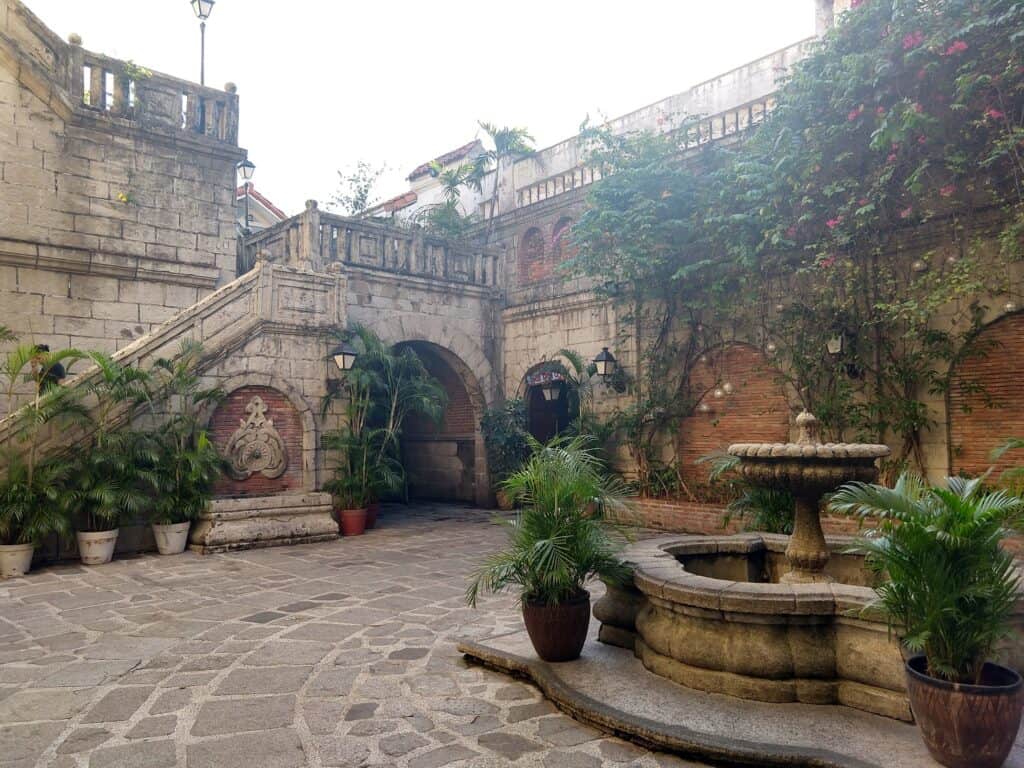
Makati is the country's finance hub and probably has more high-end venues per block than anywhere else in Metro Manila. It's farther from the tourist attractions of Manila proper, but roughly the same distance from the airport. The Salcedo and Legazpi neighborhoods are expat favorites, and Poblacion is a lower-key but hipper choice. Consider staying in Makati if you're in town for a longer period and prefer a more contemporary and (somewhat) orderly environment. It's also the right choice if you're into the club scene.
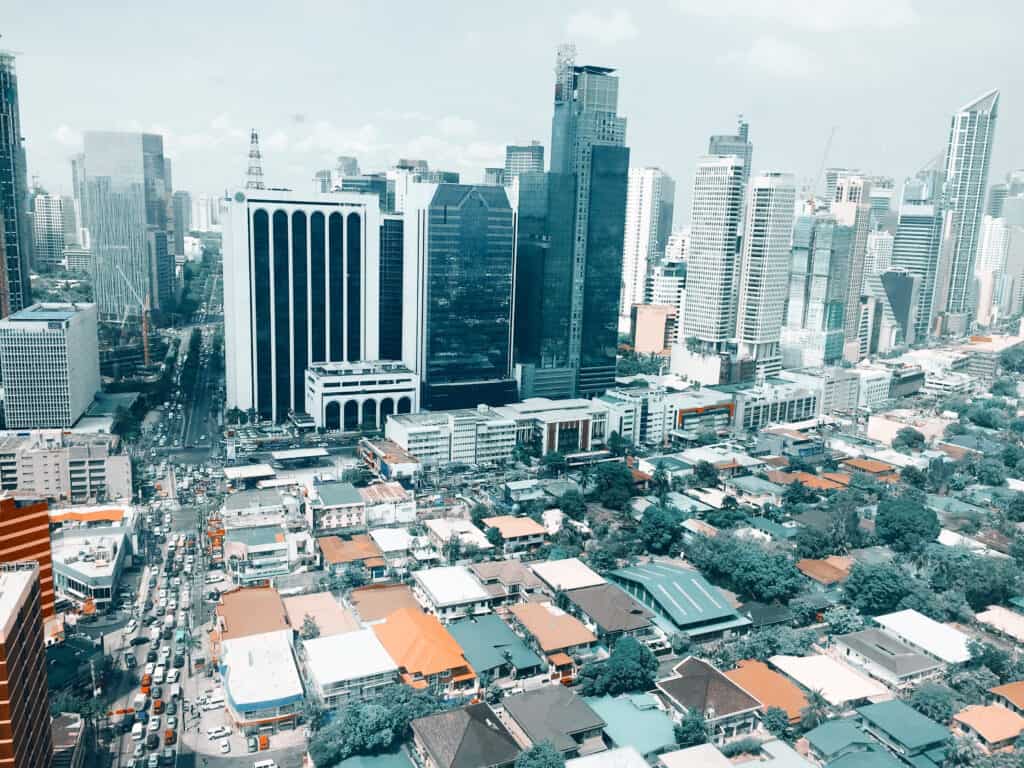
Bonifacio Global City (BGC) is a new-ish and very upscale central business district of Taguig. A lot of multinational firms' offices are here, as are many Western expats. It's just east of Makati, which adds a couple of awfully congested miles to reach tourist sites. BGC is a district, not a whole city like Makati or Manila, and feels a little calmer by Metro Manila standards. Consider staying in BGC if you prefer a modern, almost Singapore-like neighborhood and are visiting for long enough not to mind the distance to tourist attractions.

Finally, Pasay and especially the Mall of Asia vicinity, is just a couple of miles from the airport. It's also quite close to the casinos and "integrated resorts." There's little of particular cultural interest, and it lacks the "cool" factor or (relative) walkability of Makati and BGC. Consider staying around Pasay and the Mall of Asia if you're on a very brief trip and need mostly to be near the airport.
You can click here for more info on the other cities of the National Capital Region. While some of them are pleasant and have points of interest, they're neither nicer nor more convenient than the above. They're a better choice for proximity to family, friends, or work than for tourists or remote workers.
How Many Days Should I Spend In Manila?
At a bare minimum, you'll want two full days to see the major sites without getting too stressed by Manila's terrible traffic. On the high end, four to five full days are enough for most things that most visitors want to experience in Metro Manila.
If you stay in one of the areas mentioned above--as opposed to a more outlying spot--then the ride between points of interest shouldn't take too much more than an hour. That's a long time for three or five miles of travel, but you're better off planning for it than being stressed or disappointed when an overly ambitious itinerary proves impossible.
(If you're curious why traffic is so uniquely bad, then click here to learn more.)
Anyhow, two days allow for something like a half-day (at least in Intramuros), a half-day in Chinatown and/or more museums, then a full day to explore the more modern areas. That will suffice for all the must-sees.
If you are keen to explore further, then it's easy to fill three to four days comfortably but fully. That gives time for the above plus a guided tour, exploring food/coffee/whatever-you're-into, shopping, casino outings, and the like.
Unless you like a particularly leisurely pace, you'll probably run out of major to-do's after day four or five. So, if you're in town longer, then consider spending a night or two for a change of scenery in a cooler, quieter town like Tagaytay.
Conclusion: Planning Your Manila Trip
Despite a reputation for chaos, and the need for extra (but entirely reasonably) safety precautions, it's a welcoming and accessible place unlike anywhere else in Asia.
A handful of cities/districts each strike a good balance between minimizing time in traffic and maximizing the value and enjoyability of your surroundings. English speakers won't have any trouble getting around--or doing so on a modest budget.
Manila is a worthwhile stop for the right sort of traveler with the right sort of expectations. If nothing else, I hope this guide has helped to set those expectations.


